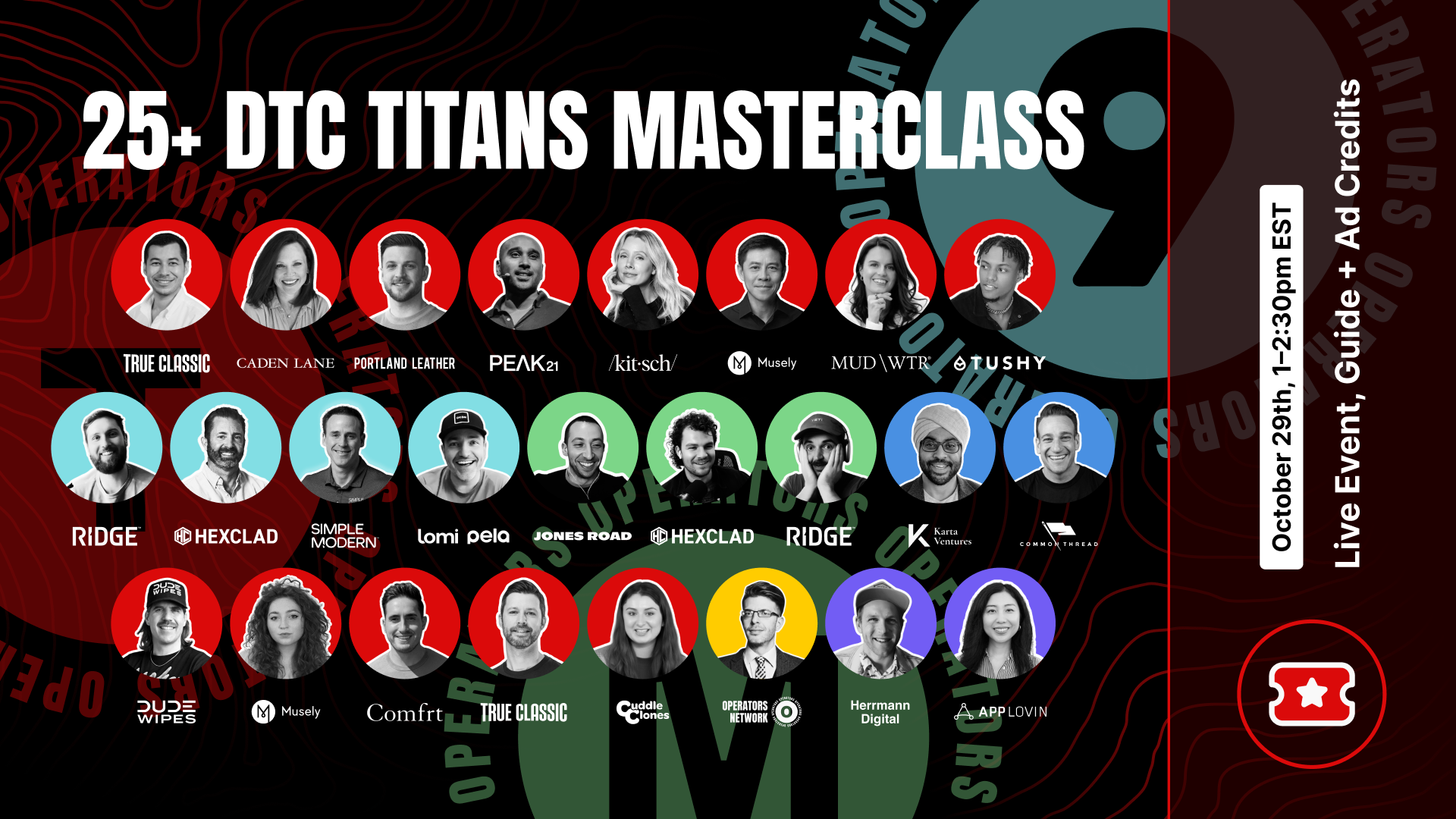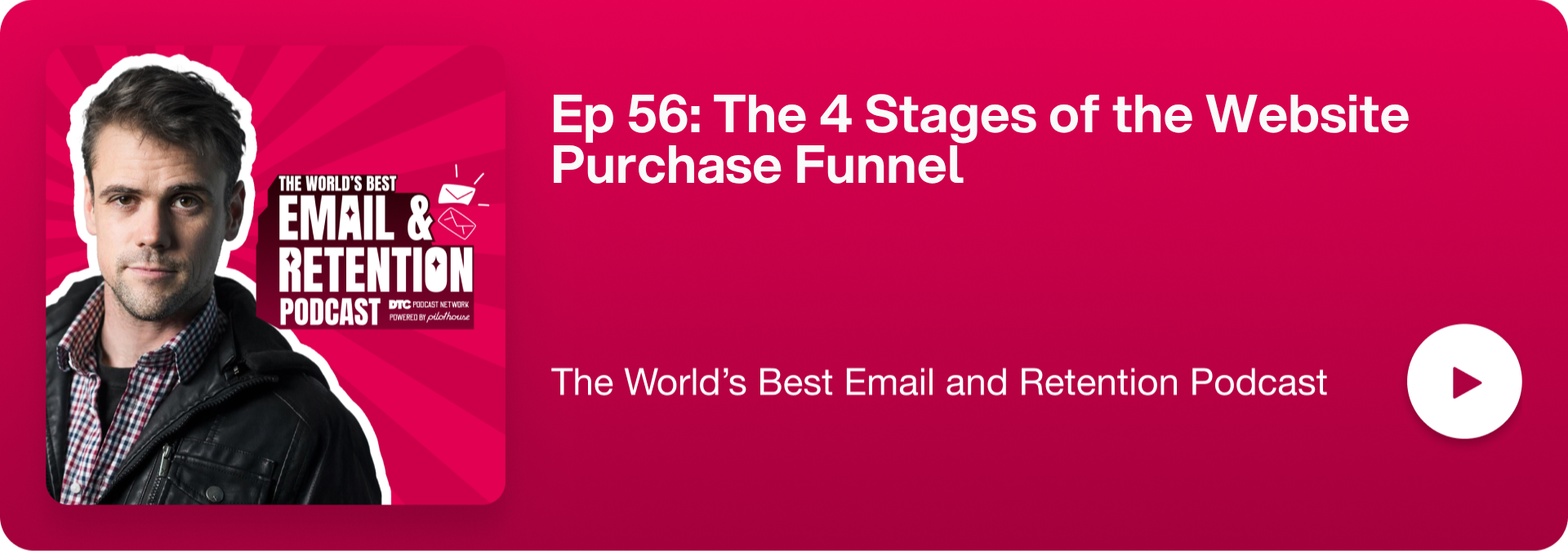
Back

Content
Content

Welcome to the DTC family!
Oops! Something went wrong while submitting the form.

Back

Content



Good morning,
Here’s what you’ll find in today’s DTC:
💡 Set Up Demand Gen for Success
How to unlock growth with this Google Ads format.
⏲️ Does Your Site Pass This CRO Test?
Strengthen your purchase funnel and customer trust.
🫲 Are Your Subscriptions Stalling?
This might be the reason why.
You’re reading this newsletter along with new subscribers from: The Sleep Shirt, Huel, and SleepEQ. 👋

🤩 Influencers Already Love Your Brand. Find Out Who… And Start Partnering With Them
💁♀️ Right now, your Instagram and TikTok followers include influencers with 10K, 50K, and 100K+ audiences. They already follow you. They already know your brand. Some already love your products.
You just couldn't see who they are... Until now. 🫣
👀 SARAL’s new “Influential Followers” feature changes that.
No more cold DMs. No more awkward intros. Just warm, genuine outreach to influencers already in your corner. 😍
Think about it: Would you rather cold pitch a stranger… or partner with a fan who already believes in your brand?
Find out who's already following you.
Plus, claim $500 when you book your demo now. 👇
* sponsored

💰 Goodbye Video Action, Hello Demand Gen
In 1956, a converted oil tanker called the Ideal X left Newark, New Jersey, carrying 58 steel boxes.
It didn’t look revolutionary, but it was.
Inventor Malcolm McLean’s idea of containerization transformed global trade by standardizing how goods were shipped.
Instead of repacking cargo at every port, containers could move seamlessly from ship to truck to train.
Efficiency soared. Costs dropped by 90%. Global trade exploded.
Fast forward to today: Google’s Demand Gen is doing for advertisers what containerisation did for shipping.
By replacing Video Action Campaigns (VAC), Google has introduced a new, unified framework for reaching users across YouTube, Shorts, Discover, and Gmail.
It’s more powerful, more flexible, and yes, more demanding.
Pilothouse shares what’s changed and why it matters:
1. Creative expectations
VACs often ran a single video and called it a day. Demand Gen needs 3–4 video variants in multiple aspect ratios (16:9, 1:1, 9:16) to match each placement.
2. Shoppable features
You can now sync your Merchant Center feed, allowing Google to pair videos with real products and make ads instantly shoppable.
3. Placement behavior
VAC mainly lived on YouTube. Demand Gen runs across Shorts, Discover, Gmail, and in-stream, meaning your creative must win in very different contexts (sound on vs. off, autoplay vs. scroll).
4. Audience tools
Demand Gen is the only campaign type still supporting Similar Audiences. If you’ve missed lookalike targeting, this is where it lives.
How to Set It Up for Success
✅ Build a creative library: Upload 3 to 4 video variants in multiple ratios, plus strong image assets. For Shorts, keep it tight (10–20 seconds).
✅ Connect Merchant Center: Make your ads shoppable from the start.
✅ Structure by intent: Separate ad groups for awareness (interest/lookalike) and conversion (remarketing/cart abandoners).
✅ Design for multiple contexts: Expect cropping, muted autoplay, and split-second attention spans. Hook hard in the first five seconds.
✅ Be patient: The learning phase takes longer. Give it at least two weeks before optimizing.
Where Demand Gen Shines
The takeaway?
Demand Gen standardizes how creative travels across Google’s ecosystem from YouTube to Shorts to Discover without repacking your message each time.
Yes, it demands more upfront work but once your campaign is “containerized,” Google delivers it seamlessly across every surface your audience touches.
Brands that adapt will scale faster while everyone else is still loading ads by hand.

🚨 This Oct 29th… Don’t Miss the Only Masterclass By-Operators, For-Operators With 25+ Ecommerce Heavyweights
👏 It’s free. It’s online.
And the only thing more epic than the lineup … are the tactics, takeaways, and insights you'll walk away with.
🤑 Get winning strategy straight from ecommerce giants, including:
👉 Plus, along with the online event October 29th, you’ll also get:
Tickets are going fast—don’t miss your chance.
* sponsored

🎧 The 4 Stages of The Website Purchase Funnel
Can your site convert a visitor in 2 minutes?
If someone lands on your site and can’t convert within your average session time, your site is leaving money on the table.
In the latest episode of TWBERP, Jordan Gordon, head of CRO and Retention at Pilothouse, shares a detailed framework on how to structure your site so it earns conversions quickly.
In this 4-stage time-based model, you’ll learn what customers are looking for in a website so you can earn their trust and business.
⏱️ The 4 Stages of Conversion Timing
0–2 Seconds: Speed is Key
👉 Use tools like Google’s PageSpeed Insights to figure out which elements are slowing down your site.
2–5 Seconds: “Is This Product for Me?”
👉 Tailor messaging to audience or traffic source and include a clear value prop above the fold.
5–15 Seconds: “Can I Trust This Site?”
👉 Don’t hide trust elements below the fold. Bring them up higher for maximum visibility!
15–120 Seconds: Get the Conversion
👉 Audit your funnel: how far do users have to scroll to convert?
🎧 Listen to the full episode with Jordan here.

Still treating subscriptions like an afterthought?
Nick Shackelford shares how slapping a “subscribe & save” button on your site won’t cut it.
Subscription growth requires a system, not a button.
The best brands build these tactics into their subscription system:
What’s wild is how many founders obsess over acquisition costs while sitting on a goldmine of customers.
Stop chasing new buyers. Start converting the ones who are already fans of the brand.

🍫 Having a hard time keeping up with the pace of producing Q4 creatives? Lovart instantly turns your promo ideas into scroll-stopping visuals. Ads, emails, and landing pages, all done by your AI Design Agent. Try Lovart here. *
* sponsored

📥 Got a B2B Biz?
Join dozens of B2B companies finding demand-gen success through our niche community of 150k brand leaders and founders this year. Talk to our team to learn more.
Have you heard our latest podcasts?
Don’t forget to rate the DTC Podcast on Apple (⭐️⭐️⭐️⭐️⭐️)
DTC Newsletter is written by Rebecca Knight and Frances Du. Edited by Eric Dyck.
Please note that items in this newsletter marked with * contain sponsored content.

